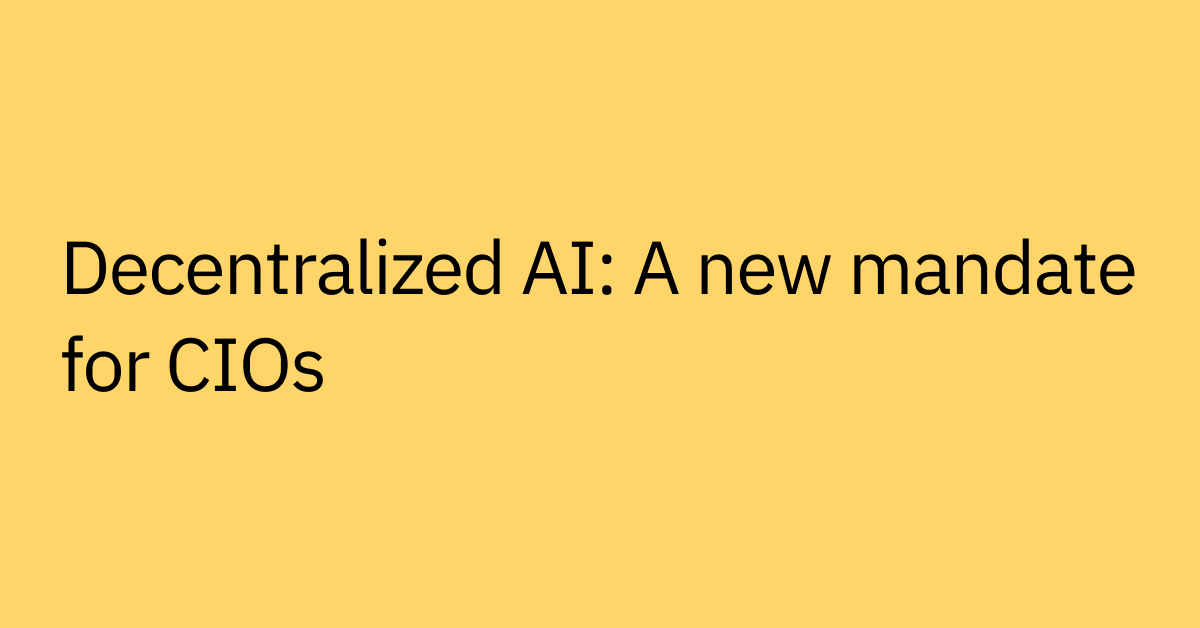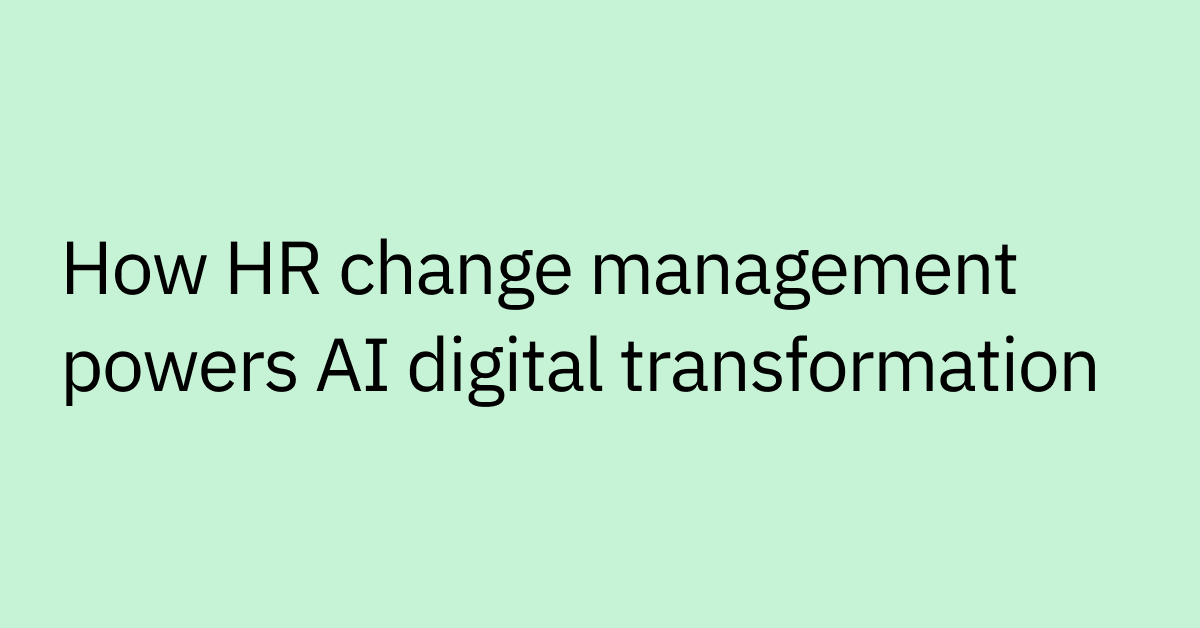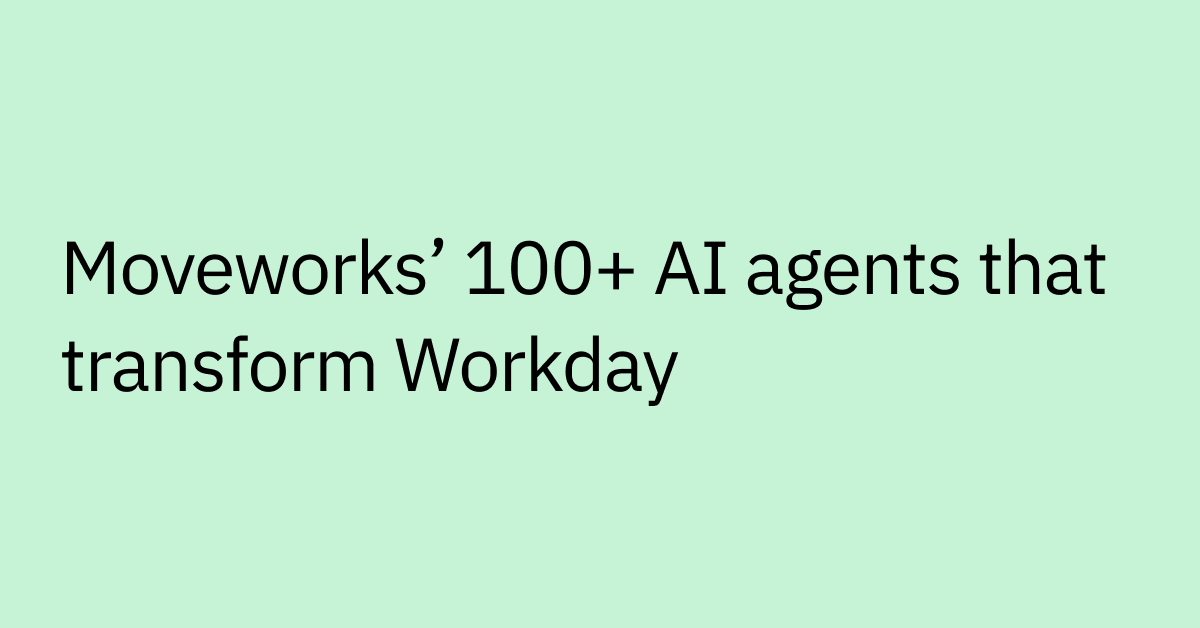Table of contents
Highlights
- Employee experience is shaped by every interaction—from IT support and communication to the tools and processes employees rely on every day.
- Poor experiences, not poor jobs, drive disengagement, especially when systems are slow, fragmented, or complex to navigate.
- Hybrid work and digital complexity have made traditional support models unsustainable, increasing the need for automation and real-time help.
- Scalable improvements start with automating routine support and delivering personalized, just-in-time help where employees already work (like Slack and Teams)
Think about the last time you called IT for a password reset or waited multiple days for HR to approve a simple request. That frustration likely escalated due to how hard it was to get what you needed to do your job.
Companies are investing heavily in employee engagement surveys, perks, and employee feedback loops. Yet only 52% of employees report feeling good about their company's onboarding process.
The disconnect paints a pretty clear picture that organizations don't really understand what shapes day-to-day employee satisfaction. Even when the job itself is compelling, poor employee experiences can ultimately lead to lower productivity, higher turnover, and disengagement.
When employees spend their day hunting for answers, waiting for approvals, or wrestling with broken processes, they have little energy (or interest) left for meaningful work. That's where the real cost of poor experience shows up: in lost productivity, frustrated teams, and talent walking out the door.
The good news is that you can use AI to provide more positive employee experiences.
What is employee experience, really?
Employee experience is the sum of every interaction an employee has with their organization—from the moment they accept an offer to their day-to-day work, support requests, career development opportunities, and even the exit interview process. It includes how employees feel about the tools, processes, communication, and culture they encounter throughout the employee lifecycle. For example, consider the difference in experience between a new hire who gets everything they need on day one and someone who waits a week for a laptop and system access or has to chase down HR forms.
A good employee experience strategy has both functional and emotional dimensions. The functional side includes tools, systems, and processes that either help or hinder productivity. The emotional side encompasses trust, clarity, and belonging—essentially, how supported employees feel when they need help.
When these elements work together, employees can focus on their actual work instead of fighting internal operational pain points.
How employee experience differs from employee engagement
Here's where many organizations get confused: engagement is a business outcome, while experience is the input.
- Employee engagement measures how employees feel about their work and their emotional connection and overall commitment to the organization.
- The employee experience is what creates those feelings, including the daily interactions that shape whether employees become engaged or disengaged.
In other words, the experience is the journey, and engagement is how employees feel about that journey.
You build engagement by removing pain points, providing fast support, and creating smooth workflows. When employees have positive interactions with your company's systems and support, engagement follows.
Learn more about measuring your own employee experience with AI.
Why employee experience matters more than ever
While it may appear to be on the surface, employee experience isn't just a HR initiative. It's a core element of a company's culture that occurs through daily interactions, tools, and processes.
Strong employee experience drives measurable business outcomes. For example, engaged organizations see 23% greater profitability, 59% less turnover, and 41% less absenteeism.
Companies with engaged employees also report experiencing a 14% increase in productivity. That means if your organization has 1,000 employees, improving engagement through better experiences could be equivalent to adding 140 productive team members without added hiring costs, training overhead, or office space requirements.
The link between experience, retention, and performance
While the onboarding experience may be the first impression new employees have when judging a company, every touchpoint throughout the employee’s tenure shapes perceptions, whether that's day-to-day support, career growth opportunities, or the exit experience. Each interaction builds trust or erodes it.
When experiences are smooth and supportive, employees can focus on meaningful work.
Poor experiences can fuel burnout, turnover, and disengagement, even when the job itself is rewarding. Employees who spend time navigating broken processes or hard-to-use systems likely have less energy for strategic work.
The hidden costs add up quickly. Replacing an employee can cost anywhere from 50%–200% of their annual salary, depending on the role. And much of this turnover stems from daily, often preventable, obstacles rather than compensation or dissatisfaction with their actual role.
The rise of hybrid work and digital complexity
Employees work across multiple tools, locations, and teams, especially in globally operating companies. This distributed approach can create more challenges for employee experience.
When support is disconnected, inconsistent, slow, or inaccessible, trust quickly erodes. Employees shouldn't have to hunt across multiple portals or wait days for basic answers.
Traditional support models ultimately break down in hybrid work environments. Manual processes that worked when everyone was in the same office don't scale when employees are dispersed across time zones and can't walk up to someone's desk for help.
Core components of a positive employee experience
The following framework can provide a foundation for creating a positive employee experience and reducing many of the day-to-day pain points your employees might encounter. Focusing on these areas can lead to more engaged, productive, and retained employees.
Fast access to support and tools
When your phone breaks, you expect your provider (or even Apple or Samsung itself) to fix it fast. When you need a ride, Lyft arrives in minutes. But when you need IT help at work? You might wait an entire day just for someone to reset your password.
That disconnect between consumer and workplace experiences can create frustration. Employees expect the same speed and simplicity at work that they get everywhere else.
The solution is automation and in-flow help, which is support that appears when and where employees need it, without filing tickets or switching between multiple systems.
Clear communication and expectation setting
Think back to the last time you had to guess what your manager wanted or hunt for a policy document. That confusion wastes time and creates frustration.
Clear communication, aligned expectations, and transparent processes can make all the difference. When employees know what's expected and how to get help, they spend less time guessing and more time contributing.
A sense of agency and personalization
How different does it feel when support knows who you are, versus when you feel like you’re just a number? For instance, a new hire asking, "How do I enroll in benefits?" should get step-by-step guidance tailored to their role and location, rather than a canned response that isn't specific to any one employee.
That's the difference between personalized support and generic responses. When employees feel like an AI-powered employee support system understands their specific needs, they're more likely to use it and trust it.
Well-being and work-life balance
Employee experience extends beyond getting work done efficiently. It includes flexibility for when life happens, psychological safety to speak up about problems, and access to resources that support overall employee well-being.
When companies invest in these areas, they can see reduced burnout and stronger employee trust. Also, people may stay longer in roles when they feel genuinely supported, not just productive.
Growth and development
When employees see training programs, mentorship, and clear advancement paths, they're more likely to stay engaged long-term.
Learning and development programs send a powerful message that you're investing in your employees' futures, not just using their current skills. That distinction matters when competing for top talent.
How to use AI to improve employee experience at scale
Improving employee experience at scale requires more than just good intentions. You need systematic approaches that work for thousands of employees across different roles, locations, and time zones.
To get started, identify “high-friction” journeys. You can map the top “moments that matter” (onboarding, time-off, device requests, benefits changes) and the systems they touch (e.g., ServiceNow, Workday, Okta, Jira). Prioritize where delays, handoffs, or duplicate tickets spike.
An AI assistant serves as a unified interface that lets employees both ask for the information they are looking for and when using AI agents can execute specific tasks too, such as updating direct deposit, requesting new equipment, or filing a PTO request. AI agents are AI systems that understand your enterprise context to plan, reason, and complete tasks autonomously across systems.
Identify the low-hanging fruit
Password resets, software access requests, and policy questions can drain time from both employees and support teams. That’s part of what makes them perfect candidates for automation: they follow predictable patterns and don't require human expertise.
Automating these routine requests frees IT and HR teams to focus on strategic projects instead of repetitive ticket handling. And employees get instant answers instead of waiting in queues—a double win.
Deliver help where employees already work
Offering support inside Slack, Microsoft Teams, or wherever employees spend their day can help get rid of the context-switching and portal-hopping that hurts productivity.
Meeting employees where they are, inside the applications that they're already familiar with, can create a better experience and build engagement by eliminating interruptions like multiple-step workflows.
Use AI to personalize the experience
AI allows you to personalize support without building complex rule sets or workflows. The system can learn context from each interaction and deliver relevant responses based on role, team, and situation.
For example, an employee asking about PTO policies gets immediate answers, along with what their current PTO balance is, thanks to AI's ability to personalize answers.
You can also deliver targeted nudges (training reminders, expiring benefits tasks) in the employee’s preferred channel/language to reduce inbox noise and improve completion rates.
Discover more about how AI-powered technology can transform the employee experience.
Fixing common employee experience challenges with AI
Even with the best intentions, many companies struggle to deliver a smooth employee experience. The reality is that everyday hurdles—from hunting for answers across multiple systems to waiting days for IT or HR support—can leave employees feeling stuck and disengaged.
This can lead to high employee turnover, ultimately negatively impacting business performance and profitability.
The good news is that AI can help mitigate these challenges.
Disconnected support systems
The problem: Employees need to switch between multiple systems (like email, portals, and forms) to find answers to simple questions. This creates frustration and slows down even the most basic of tasks. Fundamentally, context switching is one of productivity's biggest enemies.
The fix: AI can work across support channels and integrate tools so employees have a single, consistent place to go for help.
Delayed responses to IT and HR support requests
The problem: Long wait times for access, tools, or answers can bring down both productivity and morale.
The fix: Use AI agents to deliver instant, accurate responses in the flow of work. Automate common requests and provide real-time responses so employees can stay productive with fewer bottlenecks.
Inconsistent experiences across departments and locations
The problem: Lack of standardization leads to unequal access to resources and frustration. If your in-office employees have a different experience from remote workers, it can create confusion and inefficiency.
The fix: Use AI-driven solutions to measure and deliver consistent experiences across departments, time zones, and locations. This ensures that all employees have equal access to resources, regardless of their location or department.
Information overload and discoverability issues
The problem: Although important policies, FAQs, and guides exist, employees struggle to find them easily, leading to duplicate requests and wasted time.
The fix: Use AI-powered search and discovery tools that understand natural language queries. Instead of searching through document libraries or guessing keyword combinations, employees can ask their questions and get the right answers immediately from your knowledge base.
Moveworks helps remove obstacles to stellar employee experience
Great employee experience comes down to the idea that when people need help, they get it fast. When they need access, it works. When they have questions, they find answers.
Many companies hope to improve employee experience through ad-hoc initiatives like better office perks or team-building events. But the real problems happen in daily work, whether that's waiting for IT tickets, searching through policy documents, or getting stuck in a holding pattern because the right person is in a meeting or out of the office.
Moveworks AI Assistant platform tackles these everyday obstacles by:
- Meeting employees where they work: Offer employees instant help directly in Slack, Teams, or web browser ,without switching between multiple systems or filing tickets. Deliver relevant responses based on role, team, location, and business context.
- Automating routine L1 requests instantly: Password resets, app access, and policy questions can be addressed right away, with AI that interprets natural language requests and take action across your systems. "I need access to Salesforce" can get handled automatically, instead of being passed between several different teams.
- Use AI Agents to personalize the experience: Easily deploy pre-built AI agents or build with Agent Studio or AI Agent Marketplace to personalize EX without building complex rule sets or workflows.
Instead of wrestling with internal processes, Moveworks lets employees spend time on the work that matters most.
Request a demo to see how Moveworks can help make your employee experience even better.
Frequently Asked Questions
A positive employee experience improves engagement, productivity, and retention, while a poor experience leads to frustration, burnout, and higher turnover.
Employee experience is the sum of all interactions an employee has with their organization—from onboarding and daily work to support, communication, and career growth.
Employee engagement measures how employees feel about their work, while employee experience includes the systems, processes, and interactions that shape those feelings.
Key factors include access to tools and support, communication quality, workplace culture, onboarding, and how easily employees can get help when they need it.
Companies can improve employee experience by streamlining support through understanding friction points in EX, improving these through automation, personalizing support in daily tasks with tools like Moveworks.



